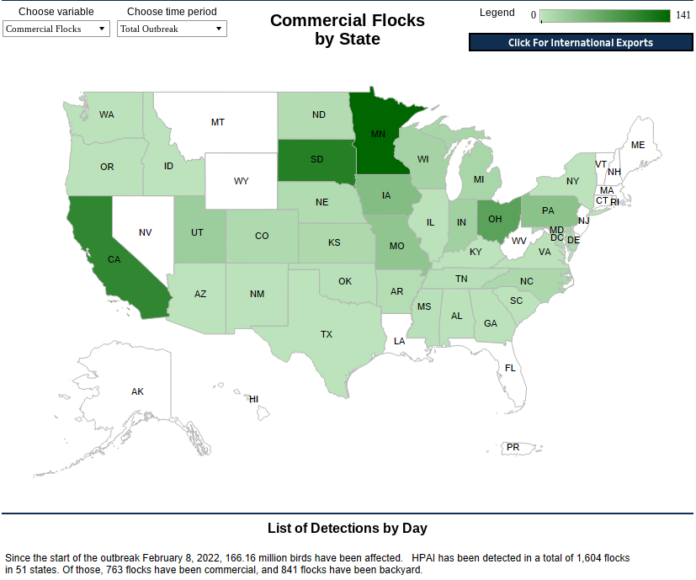
USDA’s Strategic Response to Avian Influenza Outbreak
Amidst the ongoing avian influenza outbreak significantly affecting the U.S. poultry industry, the United States Department of Agriculture (USDA) has put forth a comprehensive $1 billion plan. This initiative aims to tackle the virus’s impact while stabilizing soaring egg prices that have emerged due to substantial flock losses and disruptions within the supply chain. The ramifications of this outbreak have been far-reaching, leading to financial strain on farmers and increased costs for consumers.
Key Components of the USDA’s Plan
-
Enhanced Biosecurity Measures: A significant allocation of $500 million is designated to bolster biosecurity protocols among poultry producers. This investment is intended to minimize the risk of virus transmission from wild birds to domestic flocks, thereby safeguarding the health of poultry populations across the country.
-
Financial Support for Farmers: In recognition of the challenges faced by farmers, the USDA will allocate $400 million to provide compensation for those forced to cull infected flocks. This financial support is crucial for enabling a quicker recovery and restocking of egg-laying hens, ultimately aiding in the restoration of the poultry supply chain.
-
Vaccine Research and Development: A commitment of $100 million is earmarked for the development and evaluation of avian influenza vaccines. This funding aims to provide a long-term solution to mitigate the impact of future outbreaks, reducing the reliance on mass culling as a control measure.
-
Regulatory Reforms: The USDA is actively working to streamline regulatory processes, removing barriers that may impede recovery efforts within the poultry industry. By facilitating a more efficient regulatory environment, the USDA aims to expedite the industry’s recovery trajectory.
-
Increasing Egg Imports: To alleviate supply shortages and stabilize prices, the USDA is engaging in negotiations with international partners to temporarily increase egg imports. This strategic move is designed to address immediate supply concerns and mitigate price spikes for consumers.
Agricultural leaders have largely welcomed this multifaceted plan, recognizing the necessity of a comprehensive approach to address the challenges posed by the avian influenza outbreak. However, experts caution that while these measures are a positive step towards stabilizing the market, relief in egg prices may take several months to manifest. The complexities of the poultry industry mean that immediate solutions are often challenging to implement.
As the USDA, poultry producers, and government agencies collaborate to combat this outbreak, the focus remains on enhancing resilience within the industry. By prioritizing biosecurity, providing financial support, and investing in vaccine development, stakeholders aim to safeguard the future of the poultry and egg sectors in the United States.
In conclusion, the USDA’s strategic response to the avian influenza outbreak represents a significant commitment to protecting both the poultry industry and consumers. Through a combination of financial support, regulatory reforms, and vaccine research, the USDA aims to mitigate the outbreak’s impact while ensuring the long-term stability of egg prices and poultry production. The cooperative efforts of various stakeholders will be vital in navigating the challenges ahead and fostering a resilient agricultural landscape.



